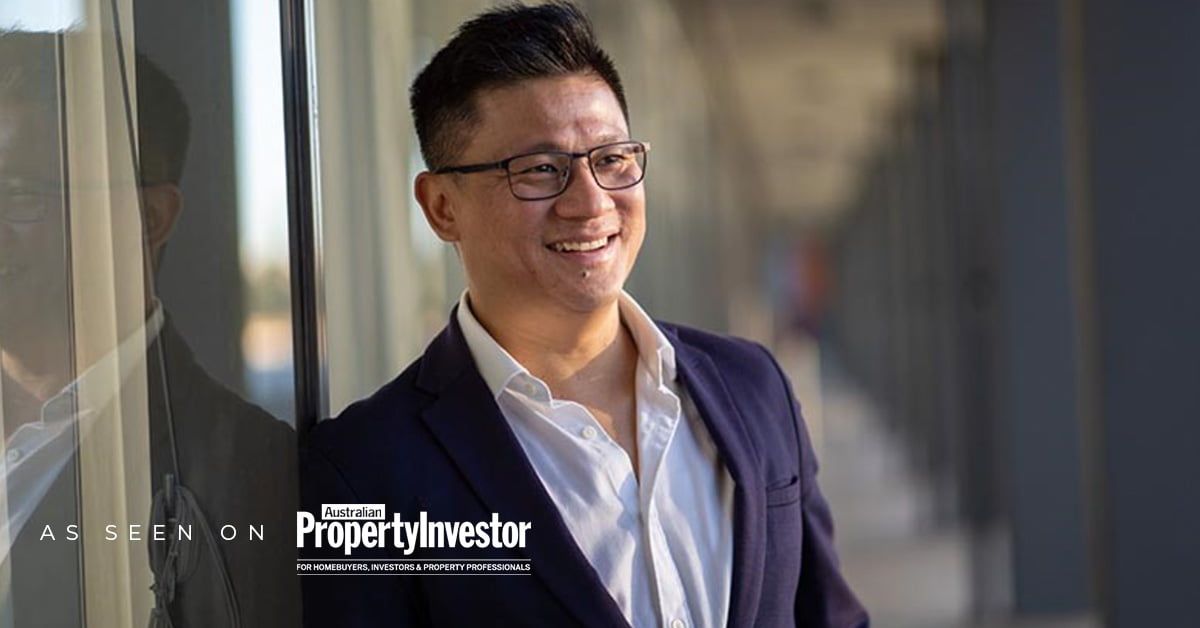Media

Seven-property portfolio emerges from uncertain career beginnings
The article is owned and published by Australian Property Investor.
A seven-property portfolio that exemplifies persistence is the product of a business model forged in the wake of shifting ambitions, an unfinished university degree, and a business enterprise that reached its growth limitations.
Colin Lee, 43, of South Brisbane has forged a formidable stable of real estate holdings in 15 years despite reaching his mid-20s uncertain of his career path.
Mr Lee grew up in Malaysia and moved to Australia when he was 19.
Childhood dreams of being a fireman or pilot gave way to undertaking an electrical engineering degree at Sydney University.
“Two and a half years into it I realised it wasn’t what I expected and I dropped out of university, to my mother’s dismay,” Mr Lee said.
“That was when I got into business, starting my first business at 24 running school programs to empower children with life skills to thrive in the real world.”
After running the business for seven years and winning a young entrepreneurial small business award, he came to the conclusion it wasn’t economically scalable.
In 2011, at the age of 28, Mr Lee bought a two-bedroom unit in Ryde after working a couple of jobs at the same time and borrowing $25,000 from the Bank of Mum and Dad.
“I had saved $25,000 over a nine-month period but it was madness – I had no social life, I broke out in pimples working seven days a week, but I had the energy to do it.
“It was nerve-wracking taking out a half million-dollar loan.
“I had a commitment of about $2,000 in payments each month and had to again tighten my shoestrings.”
Mr Lee resorted to renting out the second bedroom of his new residence, which helped take care of nearly half the mortgage.
Shaking off the more conservative financial approach of his parents required some courage but has paid off.
“It was hard to charge forward and go into debt, as I’d grown up watching my parents focus solely on paying off debt but never considering leveraging the capital they had in their mortgage.”
Data key to real estate success
Like most investors with a sizeable property portfolio, there have been wins and losses, or lessons, along the way.
Although he has dabbled in interstate diversification, Mr Lee now regards Brisbane and south east Queensland as having the most attractive investment potential.
Colin Lee
Colin Lee says being risk averse is the biggest investment risk of all.
While the latest API Magazine quarterly property sentiment survey revealed a shift in buyer intentions from Queensland to New South Wales, Mr Lee is confident that quality houses on versatile blocks of land offer continued value.
With a focus on data and experience, he determined that houses also outperformed units.
“I look at facts and figures rather than the emotional aspect of purchasing properties.
“I’ve bought properties that aren’t in the best location and learnt that learnt buying in the suburbs with higher owner-occupier ratios usually translates into better maintained, safer suburbs with higher standard amenities closer to schools, hospitals and medical facilities.
“When you drive through a street of suburb with a lot of renters you can get a sense that it’s not as desirable a suburb and in the long term the better locations also generally perform better because they appeal to owner-occupiers who will pay more than the property is perhaps valued at.”
Chasing rent yields
While his property strategy is not particularly diverse in terms of locations, Mr Lee has bought a mix of houses in different price ranges and units.
Acknowledging higher rental yields can be achieved in regional areas, he is less convinced those markets offer the same capital growth potential as the Queensland capital.
The same applies, he said, to more affordable properties that may deliver higher yields but have limited capital growth potential due to their distance from major employment centres.
“At the other end of the spectrum, I don’t think a focus on blue chip properties is as enticing due to the relatively lower yields.
“I like a balanced approach whereby 5 per cent is a good rental yield.
“$1.2 million is the point where I’d assess that the rent won’t grow in proportion to the price of the property and I need to ensure the banks look at us favourably in terms of our borrowing capability.”
Rent increases have also been implemented to help overcome the increased cost of borrowing on properties that have gone over the so-called mortgage cliff from lower fixed interest rates to considerably higher variable rates.
Subdivisions and cashflow
While units have experienced less market volatility than houses, especially during the post-Covid downturn that unfolded, Mr Lee argued apartments perform more modestly in the longer run.
“From a cash flow perspective they were good, but the capital growth was less than we expected.
“One of the properties we bought in Nundah was right next to a train station bit didn’t deliver the growth we anticipated.
“My big learning was that I’d rather buy further out for the same amount of money with a block of land I can subdivide.”
For Mr Lee, who is now CEO of Inspire Realty, his ultimate financial goal is to generate $150,000 in passive income, which he believes is seven to ten years away.
“There won’t be enough government pension support to go around and people will be reliant on their superannuation or investments.
“Living longer than ever before means there often won’t be enough in the average person’s superannuation to live on.
“So don’t sit on your hands when it comes to investing in property because you are too risk adverse – it is riskier to do nothing.”
Recent Posts
